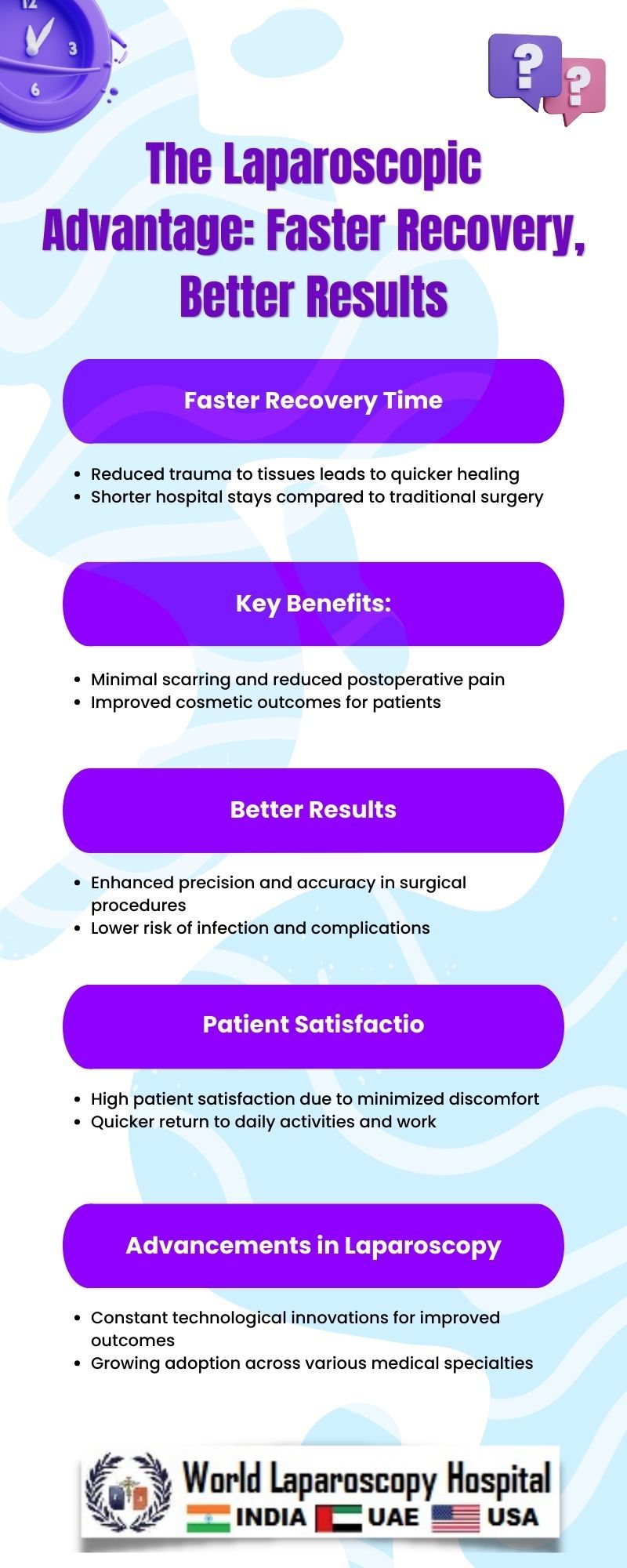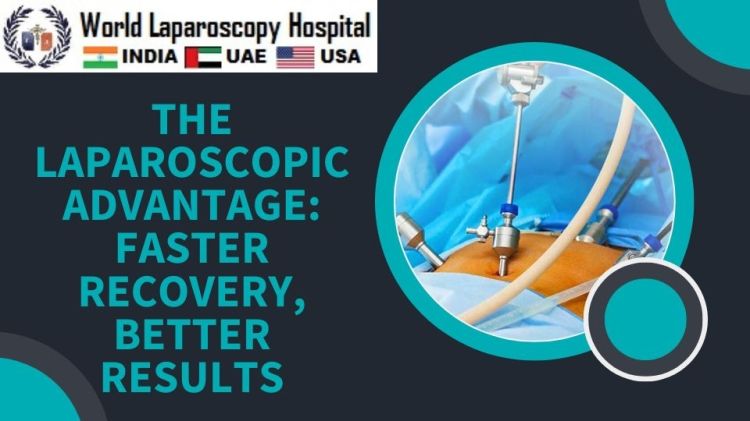Introduction:
In the ever-evolving landscape of medical science, advancements in surgical techniques have played a pivotal role in improving patient outcomes. One such groundbreaking approach that has gained widespread recognition is laparoscopic surgery. This article delves into the intricate details of the Laparoscopic Advantage, examining the nuances that contribute to faster recovery and better results in comparison to traditional surgical methods.

Understanding Laparoscopic Surgery:
Laparoscopic surgery, also known as minimally invasive surgery, involves making small incisions through which specialized instruments and a tiny camera are inserted into the body. Unlike traditional open surgery that requires a large incision, laparoscopic procedures offer a less invasive alternative with several distinct advantages.
Minimal Trauma and Smaller Incisions:The hallmark of laparoscopic surgery lies in its minimally invasive nature. Traditional surgeries often involve significant trauma to surrounding tissues due to larger incisions. In laparoscopic procedures, smaller incisions reduce trauma, resulting in less pain and a faster healing process.
Enhanced Visualization:The insertion of a tiny camera, known as a laparoscope, provides surgeons with a magnified, high-resolution view of the internal organs. This enhanced visualization allows for precision and accuracy, contributing to better surgical outcomes.
Quicker Recovery Times:The reduced trauma and smaller incisions associated with laparoscopic surgery translate into faster recovery times for patients. Shorter hospital stays and a quicker return to daily activities are significant advantages that contribute to the growing popularity of this approach.
Benefits of Laparoscopic Surgery:
Reduced Blood Loss:
The meticulous nature of laparoscopic procedures minimizes blood loss during surgery, reducing the need for blood transfusions and promoting a smoother recovery process.
Lower Infection Rates:
Smaller incisions and a more controlled surgical environment decrease the risk of postoperative infections, enhancing overall patient safety.
Decreased Pain and Discomfort:
Patients undergoing laparoscopic surgery often experience less postoperative pain and discomfort compared to those undergoing traditional open surgery. This is attributed to the smaller incisions and reduced trauma to surrounding tissues.
Cosmetic Considerations:
The cosmetic aspect of laparoscopic surgery is noteworthy, especially in procedures where incisions are made in more visible areas. Smaller scars contribute to a more aesthetically pleasing result, addressing both the functional and cosmetic aspects of surgery.
Comparative Analysis: Laparoscopic vs. Traditional Surgery:
Gastrointestinal Procedures:Laparoscopic techniques have become the gold standard for various gastrointestinal surgeries, such as appendectomy, cholecystectomy (gallbladder removal), and colorectal procedures. Studies consistently show that laparoscopic approaches lead to faster recovery, shorter hospital stays, and reduced postoperative complications compared to traditional open surgeries.
Gynecological Surgeries:In gynecology, laparoscopic surgery has revolutionized procedures such as hysterectomy and ovarian cyst removal. Patients undergoing laparoscopic gynecological surgeries experience less pain, reduced scarring, and a faster return to normal activities.
Urological Interventions:Laparoscopic approaches have also gained prominence in urological surgeries, including prostatectomy and nephrectomy. The benefits of reduced blood loss, shorter hospitalization, and quicker recovery have positioned laparoscopic techniques as preferred options in urological interventions.
Orthopedic Applications:
While traditionally associated with soft tissue surgeries, laparoscopic techniques are expanding into orthopedic procedures. Minimally invasive approaches in orthopedics are showing promise in joint surgeries, resulting in reduced pain, quicker rehabilitation, and improved patient satisfaction.
Challenges and Considerations:
While the Laparoscopic Advantage is evident in various aspects, it is essential to acknowledge potential challenges and considerations associated with this approach.
Learning Curve for Surgeons:Performing laparoscopic surgeries requires specialized training and skills. Surgeons need to overcome a learning curve to master the techniques involved, which can be a limiting factor, especially in the initial stages of adopting laparoscopic procedures.
Cost Considerations:Laparoscopic equipment and technology can be more expensive than traditional surgical instruments. While the long-term benefits in terms of patient outcomes and reduced hospital stays are evident, cost considerations may influence the widespread adoption of laparoscopic techniques.
Patient Selection:Not all patients are suitable candidates for laparoscopic surgery. Factors such as the patient's overall health, the complexity of the procedure, and the surgeon's expertise play a crucial role in determining the appropriateness of laparoscopic interventions.
Future Directions:
As technology continues to advance, the field of laparoscopic surgery is poised for further innovations. Robotics-assisted laparoscopic surgery, virtual reality training for surgeons, and improvements in instrumentation are among the areas expected to shape the future of minimally invasive procedures.
Conclusion:
The Laparoscopic Advantage is a transformative force in modern surgery, offering patients faster recovery times and superior outcomes compared to traditional open procedures. As surgeons refine their skills and technology continues to advance, the widespread adoption of laparoscopic techniques holds the promise of further improving patient experiences and outcomes across a spectrum of medical specialties. Embracing the Laparoscopic Advantage represents a significant stride towards a future where surgical interventions are not only effective but also minimally invasive, contributing to enhanced patient well-being and satisfaction.
